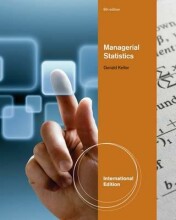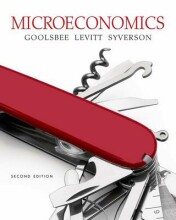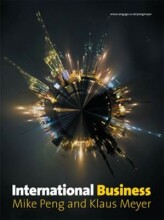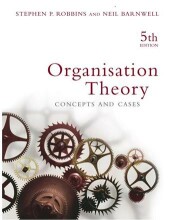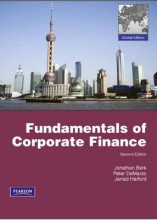Business Environment, Ownership, and Institutional Frameworks
37 important questions on Business Environment, Ownership, and Institutional Frameworks
What are the 5 areas of the environment?
- The role of the state
- Technology
- Labour
- Culture and institutions
What is a 'PEST analysis'?
What are the 4/6 types of environmental influence?
- Economic environment
- Socio-cultural environment
- Technological environment
( - Legal environment)
( - Ethical environment)
- Higher grades + faster learning
- Never study anything twice
- 100% sure, 100% understanding
What is the 'political environment' (P in PESTLE)?
What is the 'economic environment' (E in PESTLE)?
What is the 'socio-cultural environment' (S in PESTLE)?
What is the 'technological environment' (T in PESTLE)?
What is the 'legal environment' (L in PESTLE)?
What is the 'ethical environment' (2nd E in PESTLE)?
What is the LoNGPEST variation?
What are the critiques on the PEST framework?
- It only focuses on the influence of the environment on organizations, but not vice-versa
- It is a static model that focuses on present factors only, not on future issues
What is sole trader ownership?
What is a partnership ownership?
What is a limited company ownership?
- Public limited company (plc): Has shares that are available to the general public to buy, and is quoted on the stock market.
- Private company (limited, ltd): Shares are owned by the owners and not openly available
What are the 4 types of ownership?
- Partnership
- Limited companies
- Cooperatives
What is a cooperative?
What did Berle and Means discover?
Why was Berle and Means discovery so shocking?
What was Berle and Means' view of managerial control?
How can the agency problem be tackled?
Why doest the agency problem occur less frequently in family-owned businesses?
What 3 conclusions can we draw from the ownership and control debate?
- The involvement of financial institutions and other stock owning companies considerably lessen the managerial power and cause a pattern of interlocking directorships with a large amount of influence.
- The freedom of both managers and shareholder varies depending on the regulatory framework under which they operate.
What are 5 actors Whitley identifies in his business systems model?
- Customers and suppliers
- Competitors
- Firms in other sectors, i.e. those not in direct competition
- Employees
What is the Anglo-Saxon capitalism system?
What are the 3 variants of the social market model that Amable identifies?
- Continental European: Germany, Switzerland, Norway, France
- Mediterranean: Italy, Spain, Portugal, Greece
What are the spheres of activity that are crucial to the success of an organization according to Hall and Soskice?
- Vocational training and education, which included recruiting and motivating people to use their skills
- Corporate governance, included relations with shareholders and access to finance
- Relationships with other firms, such as suppliers, buyers and joint venture partners
- Relationships with employees
What are the differences between liberal and coordinated market economies?
- C: Stable, less flexible labour market, L: Greater labour mobility and flexibility
- C: Employee involvement and commitment, L: Top-down decisions and a more contractual relationship between firm and employees
- C: Cooperation between competing firms and greater integration with supply chains, L: Competitive capitalism
- C: Patient capitalism - Long term approach to investment, L: Short-term approach to investment
- C: In case of trouble: focus on relationship with banks, employees and suppliers, L: focus on market and competition
What are the 5 core responsibilities of the state in a modern society according to the World Bank?
- Developing economic policies
- Building basic services and infrastructure
- Protecting the vulnerable
- Protecting the environment
What are the 2 political philosophies that underpin the modern business world?
- Liberal pluralism (USA, Europe)
What function does the state serve in a liberal pluralist society?
When is intervention deemed necessary in a liberal pluralist society?
- To provide and/or control goods and services to individuals (e.g. defence, education), where provision by other means would be impossible or inappropriate
- To take longer-term view of economic, social and environmental change than individual businesses are capable of doing
What is the state's relationship with business like under systems of state control?
What is the state's relationship with business like under Anglo-Saxon systems?
What is the state's relationship with business like under the social market system?
What is the state's relationship with business like under the Asian model?
What are the difficulties with state intervention?
- Governments change and so do their policies and intervention
- The business community may oppose intervention attempts. Especially those who want a laissez-faire approach
- Many multinationals tend to have a greater allegiance to their own goals than to that of a single nation state
What are the types of state intervention?
- The state as employer (--> control labour market, e.g. holding down wages to cut public spending)
- The state as consumer (e.g. can influence direction of innovation)
- Legal regulation (Patents, employee protection, cartel restrictions, etc.)
- Demand management (subsidies and taxation to stimulate or cut spending for example)
- Training (skill composition influencing)
- Protection (against unfair competition from overseas through import tariffs and quota restrictions)
- Marketing (boost own business through embassies and diplomatic connections)
- Advisory services (advice to business people)
The question on the page originate from the summary of the following study material:
- A unique study and practice tool
- Never study anything twice again
- Get the grades you hope for
- 100% sure, 100% understanding





















